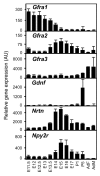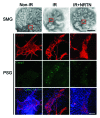Interactions between developing nerves and salivary glands
- PMID: 23974175
- PMCID: PMC3896591
- DOI: 10.4161/org.25224
Interactions between developing nerves and salivary glands
Abstract
Our aim is to provide a summary of the field of salivary gland development and regeneration from the perspective of what is known about the function of nerves during these processes. The primary function of adult salivary glands is to produce and secrete saliva. Neuronal control of adult salivary gland function has been a focus of research ever since Pavlov's seminal experiments on salivation in dogs. Less is known about salivary gland innervation during development and how the developing nerves influence gland organogenesis and regeneration. Here, we will review what is known about the communication between the autonomic nervous system and the epithelium of the salivary glands during organogenesis. An important emerging theme is the instructive role of the nervous system on the epithelial stem/progenitor cells during development as well as regeneration after damage. We will provide a brief overview of the neuroanatomy of the salivary glands and discuss recent literature that begins to integrate neurobiology with epithelial organogenesis, which may provide paradigms for exploring these interactions in other organ systems.
Keywords: cholinergic signaling; epithelial progenitors; innervation; neurturin; parasympathetic innervation; salivary gland.
Figures



References
-
- Knosp WM, Knox SM, Hoffman MP. Salivary gland organogenesis. WIREs. Dev Biol. 2012;1:69–82. - PubMed
Publication types
MeSH terms
Grants and funding
LinkOut - more resources
Full Text Sources
Other Literature Sources
